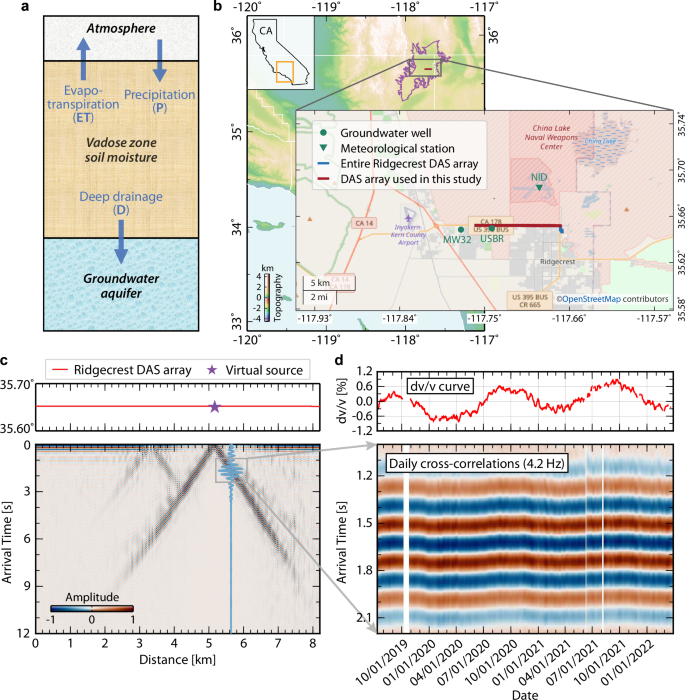2024-08-05 カリフォルニア工科大学(Caltech)
◆2019年のリッジクレスト地震後、DASアレイを設定し、5年間のデータ収集でバドス帯の水分動態をモデル化しました。結果、2019年から2022年の干ばつにより、モハーヴェ砂漠全体で毎年フーバーダムと同量の水が失われていることが判明。この技術は水資源管理に重要であり、他地域でも展開予定です。
<関連情報>
- https://www.caltech.edu/about/news/seismic-detectors-measure-soil-moisture-using-traffic-noise
- https://www.nature.com/articles/s41467-024-50690-6
光ファイバーによる土壌水分動態の地震センシング Fiber-optic seismic sensing of vadose zone soil moisture dynamics
Zhichao Shen,Yan Yang,Xiaojing Fu,Kyra H. Adams,Ettore Biondi & Zhongwen Zhan
Nature Communications Published:05 August 2024
DOI:https://doi.org/10.1038/s41467-024-50690-6

Abstract
Vadose zone soil moisture is often considered a pivotal intermediary water reservoir between surface and groundwater in semi-arid regions. Understanding its dynamics in response to changes in meteorologic forcing patterns is essential to enhance the climate resiliency of our ecological and agricultural system. However, the inability to observe high-resolution vadose zone soil moisture dynamics over large spatiotemporal scales hinders quantitative characterization. Here, utilizing pre-existing fiber-optic cables as seismic sensors, we demonstrate a fiber-optic seismic sensing principle to robustly capture vadose zone soil moisture dynamics. Our observations in Ridgecrest, California reveal sub-seasonal precipitation replenishments and a prolonged drought in the vadose zone, consistent with a zero-dimensional hydrological model. Our results suggest a significant water loss of 0.25 m/year through evapotranspiration at our field side, validated by nearby eddy-covariance based measurements. Yet, detailed discrepancies between our observations and modeling highlight the necessity for complementary in-situ validations. Given the escalated regional drought risk under climate change, our findings underscore the promise of fiber-optic seismic sensing to facilitate water resource management in semi-arid regions.



